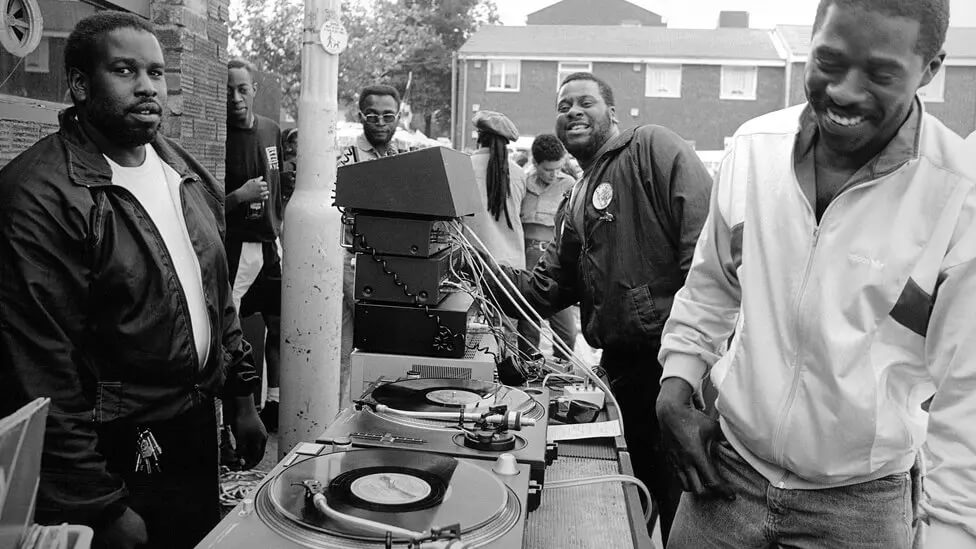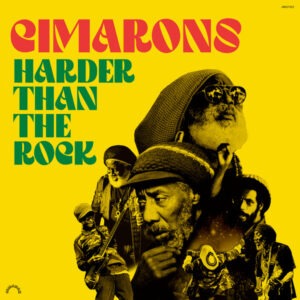Reggae in Britain is more than just music — it’s a story of migration, identity, and resistance. From the crowded dancehalls of 1960s London to the political anthems of the 1970s, the UK reggae scene grew out of the struggles and creativity of Caribbean immigrant communities. Their sound systems, record shops, and bands didn’t just bring Jamaican music across the ocean; they reshaped British culture forever.
The Short Answer
The UK reggae scene was built by Caribbean immigrants, especially Jamaicans who arrived during the Windrush era. They brought sound system culture, ska, and early reggae to Britain, laying the foundation for a vibrant movement that became both a cultural identity and a voice of resistance in 1970s and 1980s Britain.
![Vincent George Forbes, better known as Duke Vin, brought the first sound system to Britain [photo Phillips, Charlie. ©London Museum]](https://enkismusicrecords.com/wp-content/uploads/2025/08/Vincent-George-Forbes-better-known-as-Duke-Vin-1-1024x1024.jpg)
The Windrush Generation and Caribbean Immigration (1948–1960s)
After World War II, Britain faced labor shortages and encouraged migration from the Caribbean. Thousands of Jamaicans, Trinidadians, and Barbadians arrived on ships such as the Empire Windrush in 1948. These communities carried their music with them — calypso, ska, bluebeat, and the emerging sounds of Jamaican rhythm & blues.
But life in Britain was not easy. Caribbean immigrants often faced racism, poor housing, and limited opportunities. Music quickly became more than entertainment: it was a way to maintain identity, build community, and cope with everyday struggles.
Sound Systems and Social Clubs
In Jamaica, sound systems—powerful mobile speaker setups run by selectors and DJs—were central to street culture. Immigrants brought that tradition to Britain. As early as the mid-1950s, figures like Duke Vin and Count Suckle were running some of the first sound systems in London, setting up dances in community halls and basements.
These events were more than parties. They became safe spaces for Black British youth to gather, celebrate their heritage, and hear the latest imports from Kingston. Out of these dances grew the UK’s own reggae sound, as producers and musicians began making music tailored to local audiences.

Reggae as Identity and Resistance
By the 1970s, reggae in Britain had taken on a new role: it became the soundtrack of resistance. The children of Caribbean immigrants — the first generation of Black Britons — used reggae to assert identity in a country that often treated them as outsiders.
Reggae’s lyrical themes of oppression, freedom, and Rastafarian spirituality resonated deeply with this audience. Bands such as Steel Pulse and Aswad not only entertained but also spoke to issues of racism, police harassment, and social inequality. Reggae’s presence in political movements like Rock Against Racism gave it a voice far beyond the Caribbean community.
Pioneering UK Reggae Bands

By the mid-1970s, British-born reggae bands emerged, blending Jamaican traditions with local realities. The Cimarons, formed in London in 1967, were among the first reggae groups in Europe, backing visiting Jamaican artists and later recording their own albums.
Following them, Steel Pulse from Birmingham and Aswad from London brought reggae into the mainstream without losing political edge. Their success showed that reggae had taken firm root in British soil, no longer only an imported sound but a homegrown cultural force.
Read the article: Cimarons: The Trailblazing Pioneers of British Reggae
Reggae’s Legacy Beyond the Caribbean Community
Reggae in the UK didn’t stay confined to Caribbean audiences. By the late 1970s and early 1980s, it had influenced white British musicians too. Punk bands like The Clash and The Slits collaborated with reggae artists, while the ska revival (led by The Specials and Madness) drew directly from Jamaican bluebeat and rocksteady.
Today, reggae remains central to Britain’s cultural landscape. Festivals, sound systems, and record labels across the UK continue to celebrate the music, carrying forward the legacy of those early immigrants who laid the foundation.
FAQs about how UK immigrant communities built the Reggae scene
Reggae arrived in the UK in the 1960s with Caribbean immigrants, especially Jamaicans of the Windrush generation.
The Cimarons and Greyound (initially the Rudies) were among the first reggae bands formed in Britain in the 1960s. Steel Pulse and Aswad were among the most prominent and influential of the second wave of UK reggae bands, formed in the 1970s.
Sound systems created community spaces for Black Britons, spreading imported Jamaican reggae records and later fostering local reggae production.
Reggae became the soundtrack for activism, especially during the Rock Against Racism movement in the 1970s.
Cover image from: sampleface.co.uk
Sources:
David Katz – Solid Foundation: An Oral History of Reggae (2003)
Lloyd Bradley – Bass Culture: When Reggae Was King (2000)
Museum of London – Dub London: Bassline of a City (Exhibition Archive, 2020)
BBC Culture & History Features on the Windrush generation
British Library Sound Archive

